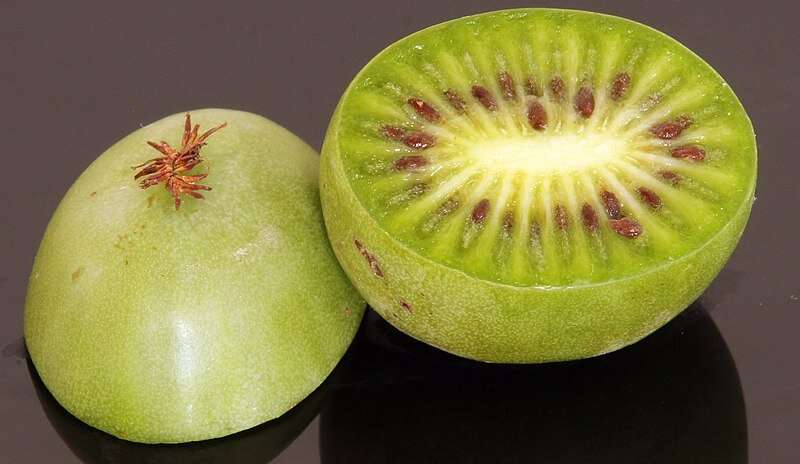Molecular markers explore natural population structure and trait-related loci of kiwiberry
Actinidia arguta (Sieb. & Zucc.) Planch. ex Miq., also called kiwiberry or baby kiwifruit, belongs to the genus Actinidia and the family Actinidiaceae. It is distinguished from other kiwifruit by its small size, and smooth, hairless, green or purple colored, edible skin, and a sweet aroma. It is one of the most widely planted Actinidia species in commercial orchards.
Researchers from the Wuhan Botanical Garden of the Chinese Academy of Sciences, together with collaborators from the New Zealand Institute for Plant and Food Research Limited and Chinese Research Academy of Environmental Sciences, have evaluated the genetic diversity and population structure with 189 accessions genotyped by 200 simple sequence repeats (SSR) markers.
A total of 2,496 alleles were identified from 189 accessions of the seven wild populations. Through population structure analysis, the accessions could be classified into four subgroups, each subgroup was consistent with the geographical distance.
Association analysis identified 35 SSR markers significantly associated with fruit traits, such as gender and flesh color. The marker LR71 found in this study was significantly associated with color and linked with a transcript encoding MYB transcription factor protein.
This is the first time to use such large numbers of wild genetic accessions to do genetic association mapping in A. arguta through genomics and gene transcription with SSR. The results will provide a substantial resource for future understanding of molecular relationship of A. arguta with other Actinidia species and molecular marker-assisted breeding.
The results have been published in Scientia Horticulturae.
More information: Xue-Mei Lu et al, Structural analysis of Actinidia arguta natural populations and preliminary application in association mapping of fruit traits, Scientia Horticulturae (2022). DOI: 10.1016/j.scienta.2022.111306
Provided by Chinese Academy of Sciences




















